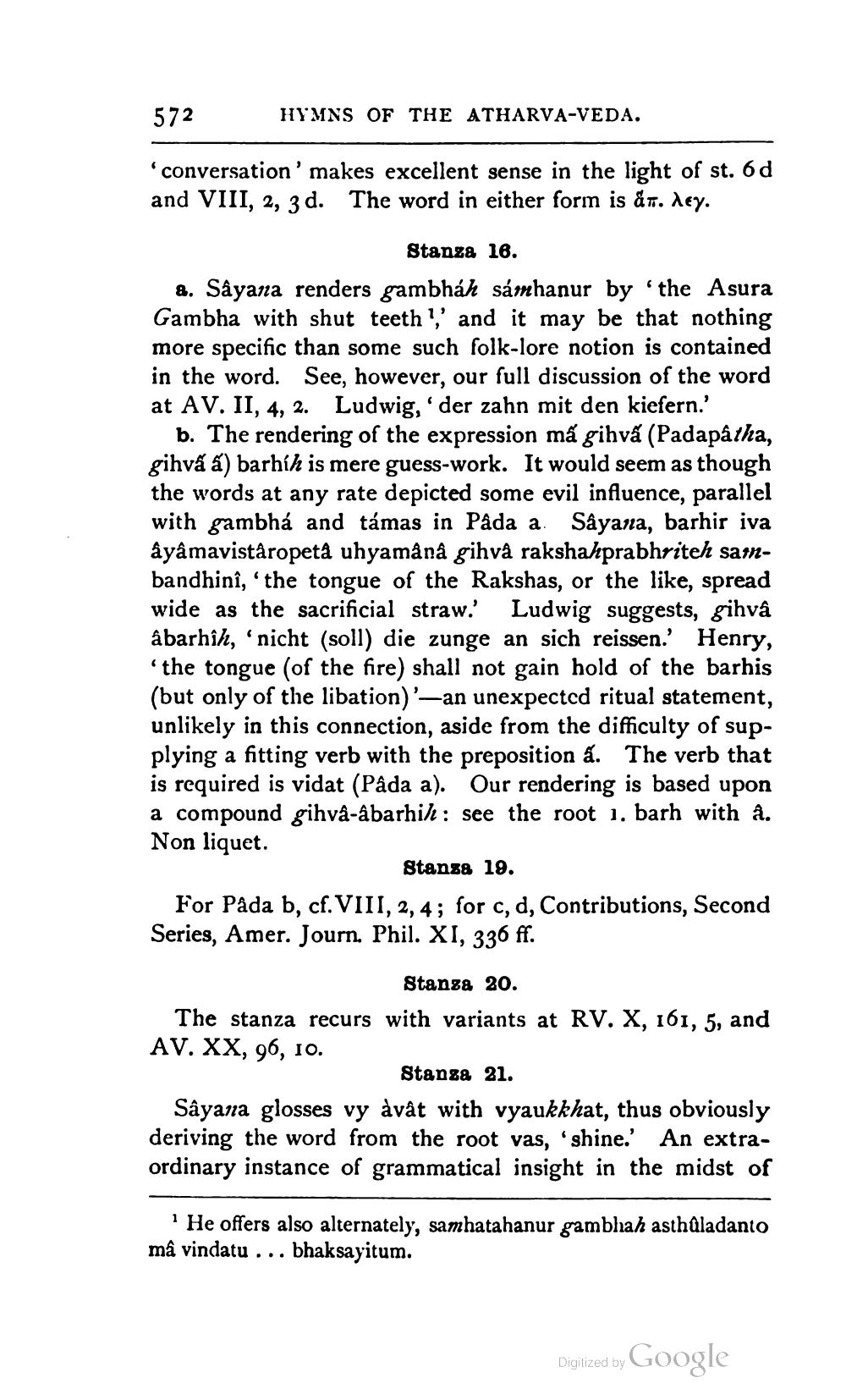________________
572
HYMNS OF THE ATHARVA-VEDA.
'conversation' makes excellent sense in the light of st. 6d and VIII, 2, 3 d. The word in either form is åt. dey.
Stanza 16. a. Sayana renders gambháh sámhanur by the Asura Gambha with shut teeth ?,' and it may be that nothing more specific than some such folk-lore notion is contained in the word. See, however, our full discussion of the word at AV. II, 4, 2. Ludwig, der zahn mit den kiefern.'
b. The rendering of the expression má gihvá (Padapatha, gihvá a) barhíh is mere guess-work. It would seem as though the words at any rate depicted some evil influence, parallel with gambha and támas in Påda a. Såyana, barhir iva âyâmavistaropetå uhyamânå gihvå rakshahprabhriteh samnbandhinî, 'the tongue of the Rakshas, or the like, spread wide as the sacrificial straw. Ludwig suggests, gihva âbarhîh, 'nicht (soll) die zunge an sich reissen. Henry, 'the tongue (of the fire) shall not gain hold of the barhis (but only of the libation)'-an unexpected ritual statement, unlikely in this connection, aside from the difficulty of supplying a fitting verb with the preposition a. The verb that is required is vidat (Pada a). Our rendering is based upon a compound gihvå-âbarhih : see the root 1. barh with å. Non liquet.
Stanza 19. For Pada b, cf.VIII, 2, 4; for c, d, Contributions, Second Series, Amer. Journ. Phil. XI, 336 ff.
Stanga 20. The stanza recurs with variants at RV. X, 161, 5, and AV. XX, 96, 10.
Stansa 21. Sâyana glosses vy dvât with vyaukkhat, thus obviously deriving the word from the root vas, "shine.' An extraordinary instance of grammatical insight in the midst of
He offers also alternately, samhatahanur gambliah asthuladanto mâ vindatu ... bhak sayitum.
Digitized by Google




